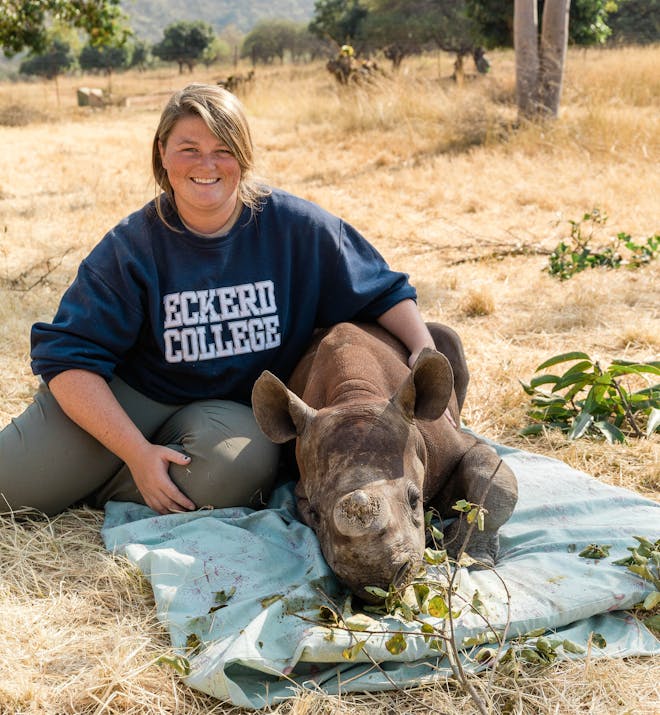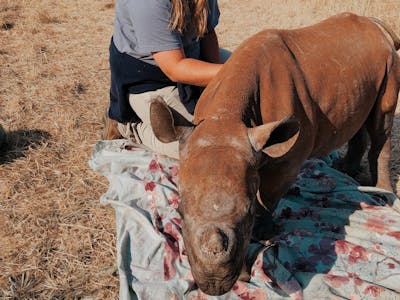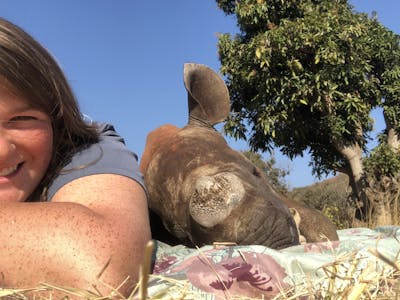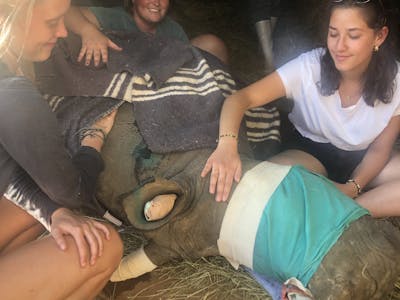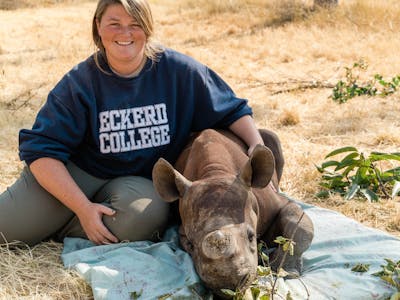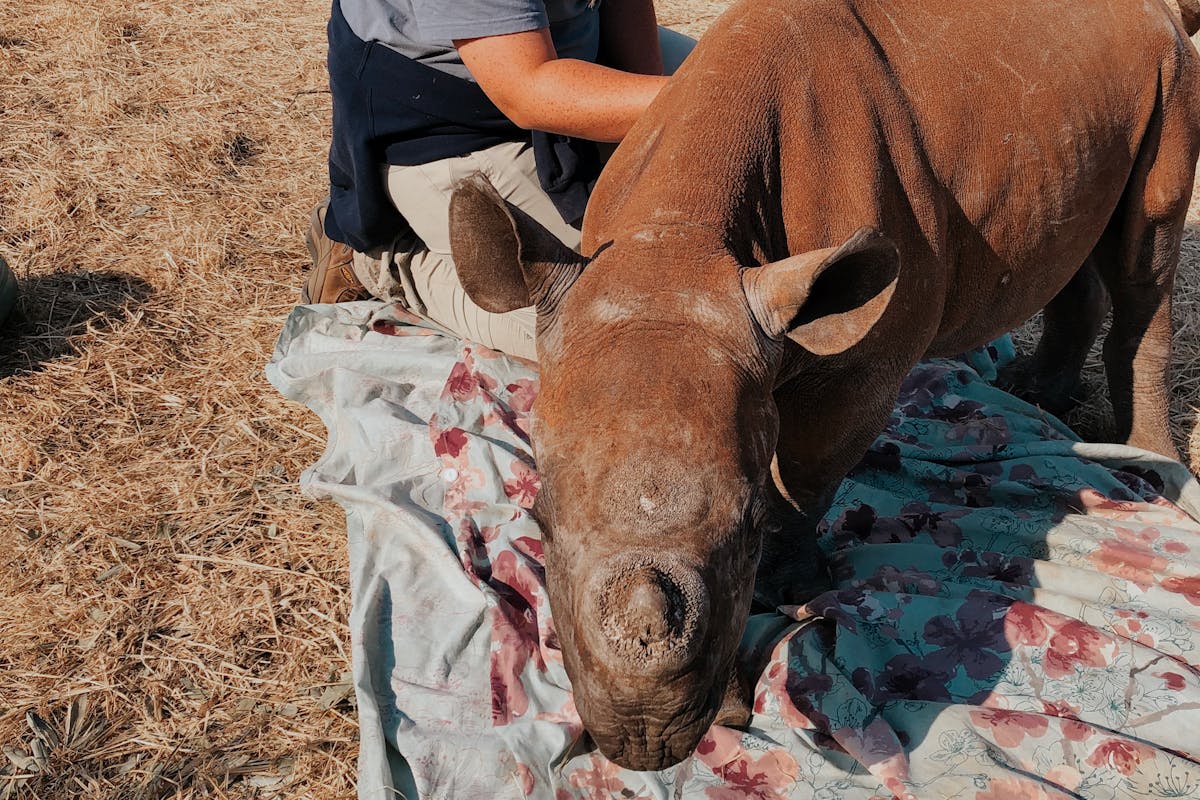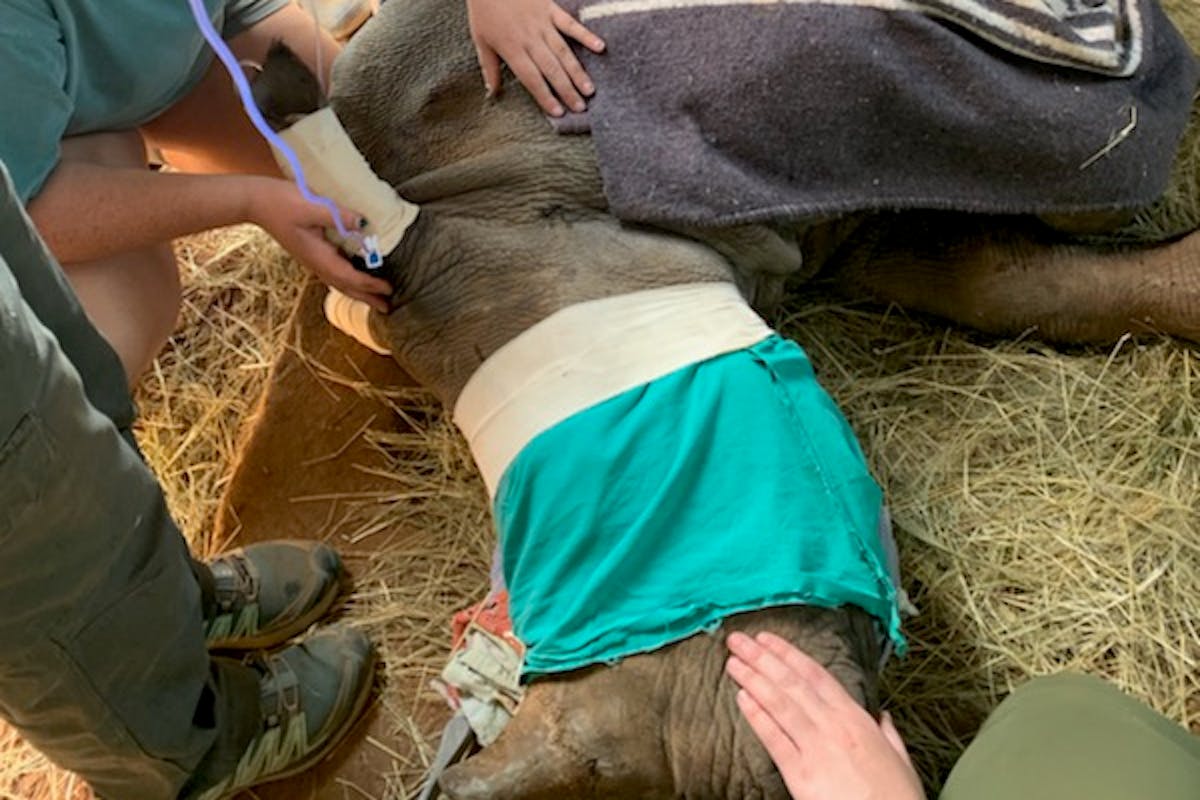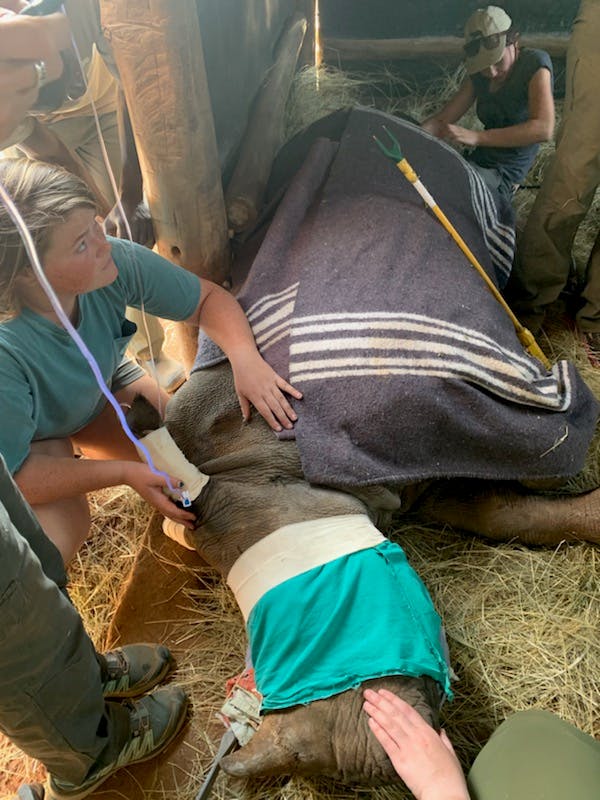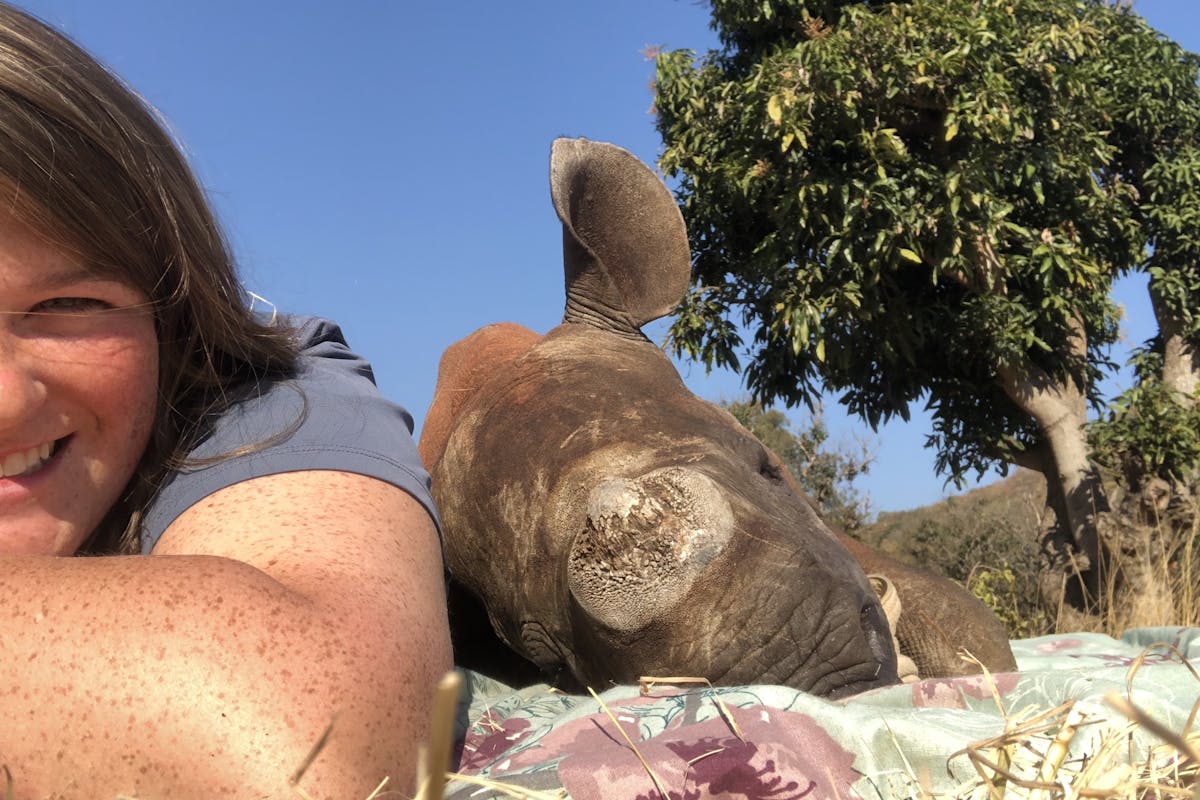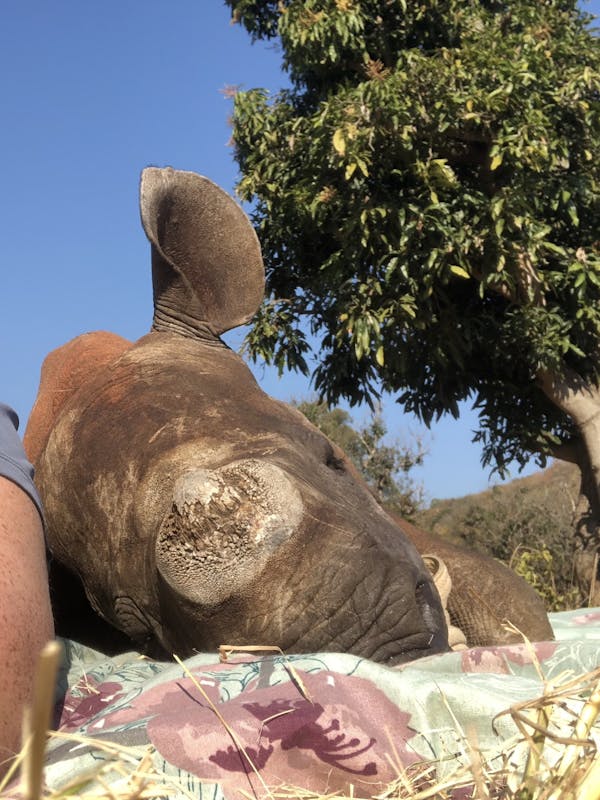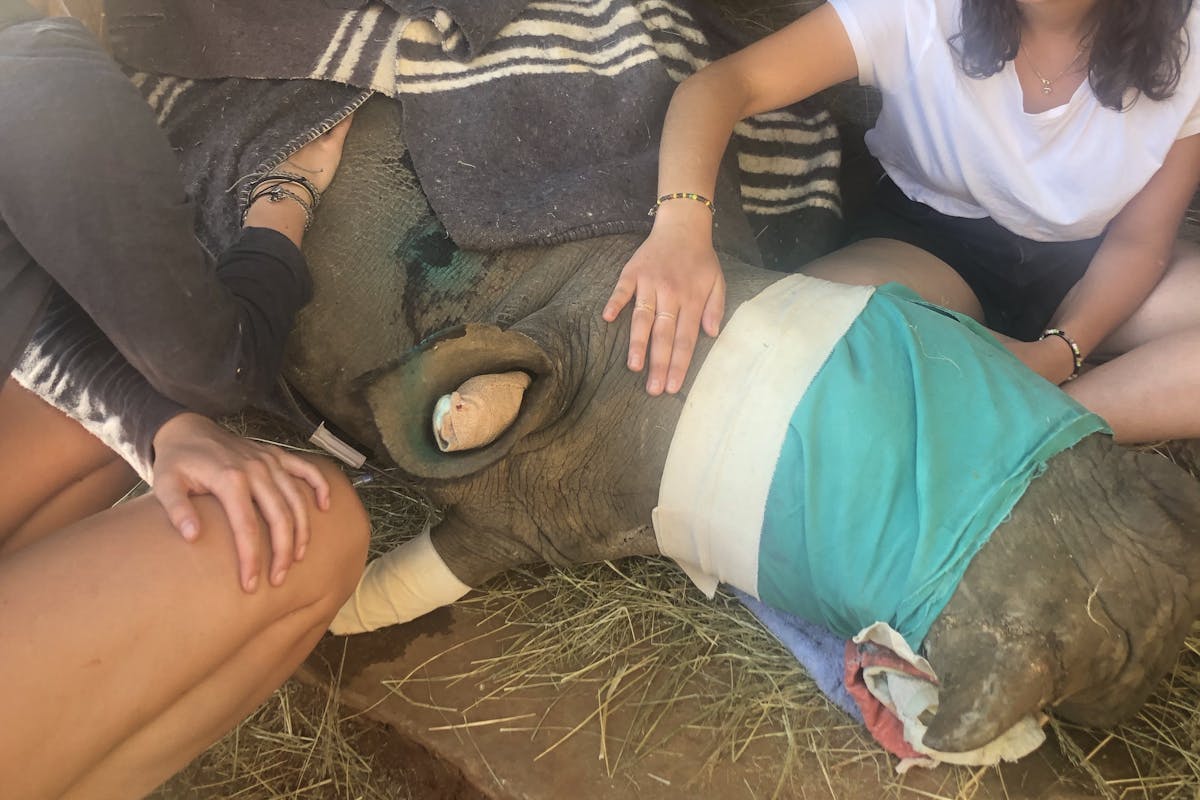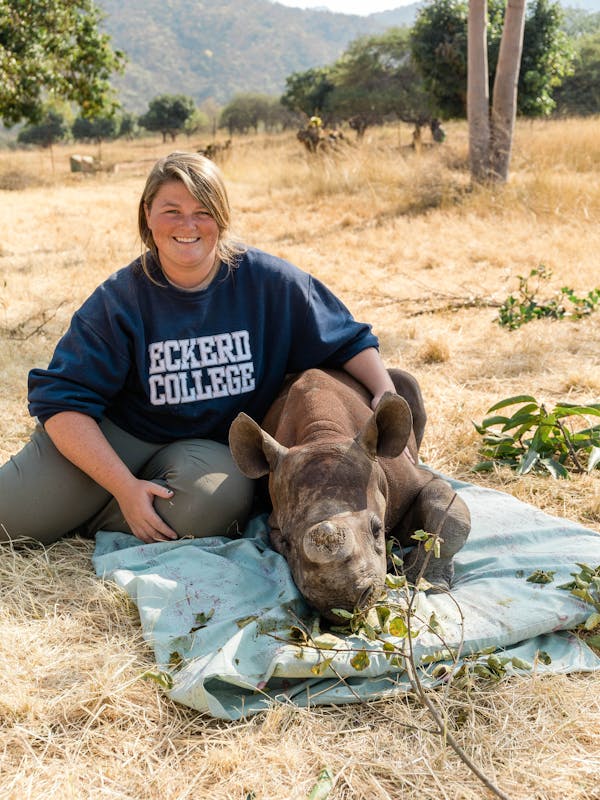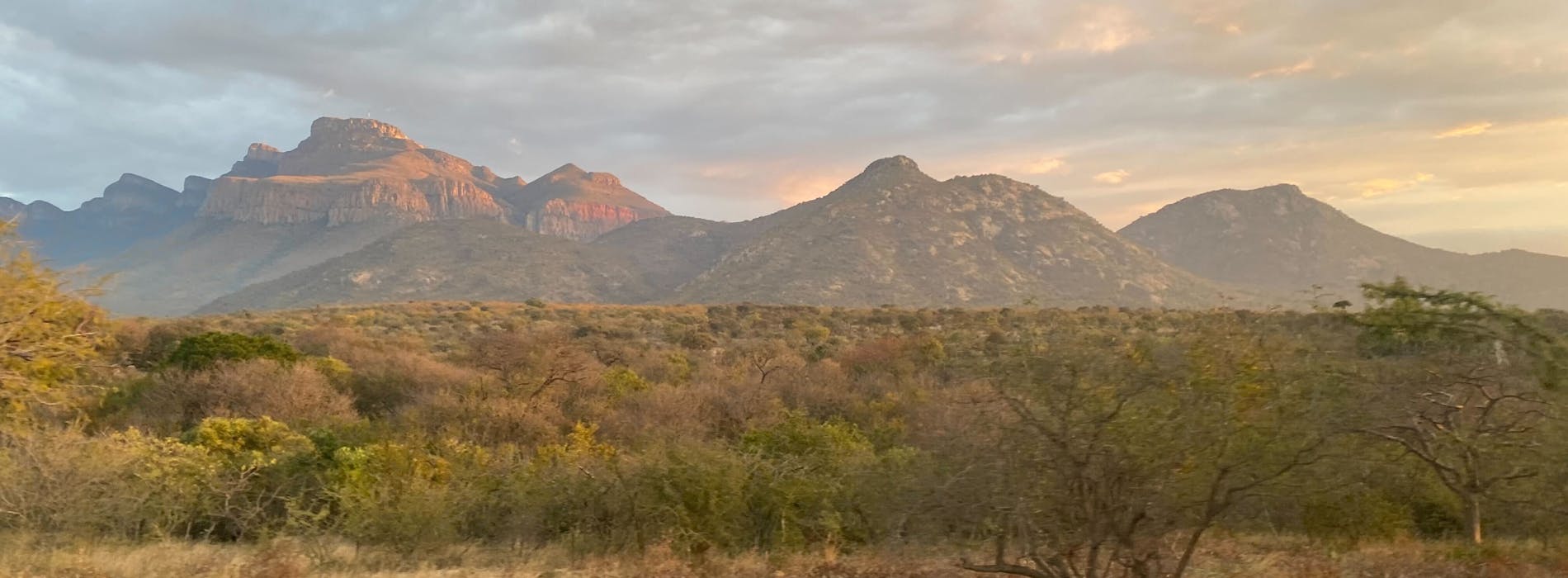
Growing up, I have always loved animals and knew I wanted to work with them.
But I did not want to work with just regular animals.
I wanted to work with wild animals.
A couple of year’s ago, my dad and I went to South Africa and visited Kruger National Park for a couple days. Then, three years ago we did a horseback safari in the Okavango Delta in Botswana. We absolutely loved it and the wildlife was spectacular. I wanted to see if there were any opportunities to help wildlife in Africa so I started doing research. I found Care for Wild on Instagram and then, African Conservation Experience. I emailed and talked to Ellie about what I was looking for and she told me about Care for Wild and Phinda.
When I first arrived at the airport, Martin was there to help guide me to the right place. He also told us what to expect and some information we needed to know before we went. After driving to Care for Wild, Luzinda was there to help settle us in. Michèle and Will walked us through what we do at Care for Wild and things to do and not to do. They also talked about the schedule day to day, but it can always change with the arrival of a baby.
The daily schedule is usually the morning meeting at the barn before you start working. This meeting is usually to say if there are any schedule changes; like the vet is coming or a camera crew. After, we head down to the bomas. We split up and some start making the milk for the babies. The others go out to the pasture where the babies are let out for the day. We rake the hay into piles and put lucerne on top. Will lets the babies out into pasture for the day. We feed the babies their morning milk, then start to clean all their bomas. By the time we are done, it is time for breakfast. After breakfast, we head down and start to organize all the bedding and feed that goes into the clean bomas. We give the babies their next set of milk as well. Then, we head back up to the stonehouse for lunch. Once lunch is over we give the babies their next set of milk. Then, we put their bedding and food out. We clean up any mess we have made before the babies are taken back to their bomas for the night. After we have finished taking care of all the babies, we usually have something fun planned like a game drive, sunset drive, or relaxing down by the river. We also have night feeds that we do for the babies and that is their last milk of the day.
After about 2.5 weeks, I had the chance to meet a baby black rhino who had to be taken care of differently than the other babies. The baby, Swazi, needed to be watched over because she would eat sand which is very bad for her. One day, I took breakfast out to Michèle who was watching Swazi at the time. I had heard that Swazi did not take well to new people so I walked up to them cautiously. Michèle and I were surprised when she walked up to me and started rubbing her head up against my leg. I fell in love with her right then and there. I stayed and rubbed her head for a bit before I had to pull away and get back to work. The next morning, Diana, Rachel, and Michèle came and talked to me and asked if I would help with Swazi. I, of course, said yes. Petronel also came to talk to me and she said that I was doing such great work and that I was being a great help to them. I couldn’t believe it and was moved by what she said. Petronel is one of the most passionate people I have met. She is always working on saving the rhinos and so invested in making a different. She is one of my inspirations.
I would help by making Swazi’s milk in the morning. We also mixed some pellets with lucerne and fed them to her. After breakfast, we let Swazi out to the nyala camp with Bucky, her companion goat. Most of the nala camp is covered in grass so it is easier to watch Swazi and let her get exercise there. In the camp, we would give her the second milk of the day with some pellets. We walked Swazi around so that she can build up muscle and we also gave fresh branches so that she could learn how to eat like a black rhino. While at the camp, her boma is cleaned out and fresh bedding is put in as well as fresh branches. Swazi and I had some great times hanging out, we played in the water trough and with a bucket. We also had a mud bath, but had to make sure she did not lick the mud off of her. We chased the nyalas away when they wanted to eat Swazi’s branches. Swazi also loved to watch the big rhinos run down from the hill to their food that was put out.
After spending time with Swazi, I realized I did not want to leave so I decided not to go to Phinda and spend the rest of the three weeks at Care for Wild. It was the best decision.
During those six weeks, two new babies came in, Mayar and Blossom. Mayar came in the middle of the night after her mother was poached. She had no injuries, but she did not fair well without her mother. The vet came multiple times so I had the opportunity to help out and watch over her. Blossom came when three groups had arrived at Care for Wild. We all loaded up in the vehicles and met the helicopter at the heli pad in the field. Blossom had been out on her own for a week so the hyenas had gotten to her. Her tail and ears had been chewed on so Diana started to work on her wounds and clean them up until the vet could come out later in the week and check on her. The part that really shook me with Blossom was when I found out she had been shot. I could not believe what Blossom had gone through. Blossom had an amazing recovery and I knew she would do great at Care for Wild. After she recovered, we took a chance and put her and Mayar together. They instantly clicked and have been inseparable since. They have helped each other heal and it has been great to watch them.
Some days, we were asked to help put out some hay bales and split them for the bigger rhinos. Sometimes the rhinos are not there, and sometimes they are there, which makes things very interesting. We have to be careful around them because they are wild (and huge) animals, but you do get pretty close to these animals and it is a sweet moment to see them that close.
Care for Wild has a lot of animals on their reserve, including cats. I got to help Anita take care of the cats a couple of times when she needed help. We put bedding into their pens when it was getting cold and we also prepared their food for them. Snowball is one of the more interesting cats and there is also the squirrel that is super cute. While I was on Swazi duty, I had the chance to help Rachel with any supplements that the some of the rhinos needed who were under the weather. We would make lollies that had all the supplements they needed as well as some lucerne.
When the school groups came, we had a lot of fun. We had a soccer match on the field that was covered in rhino poo. We ran around on it which was fun. We also had the rhino Olympics where did things with hay bales and tug of war over the rhinos mud bath.
These people are the best people to work with. They know what they are doing and are very passionate about rhinos. If you want to see extraordinary things, Care for Wild has them. Everyone has a story to tell and there are a lot of stories. You will be impacted by what you see and hear. When you arrive, they tell you that you have to be able and willing. This will be helpful while you are working there. As long as you are willing, you will do just fine. These people and animals are now engraved in my heart and I miss them. I want to do whatever I can to help them. Care for Wild made me realize that I want to work with rhinos and help the war on poaching. I can’t wait to go back and i’m counting the days until I do.

